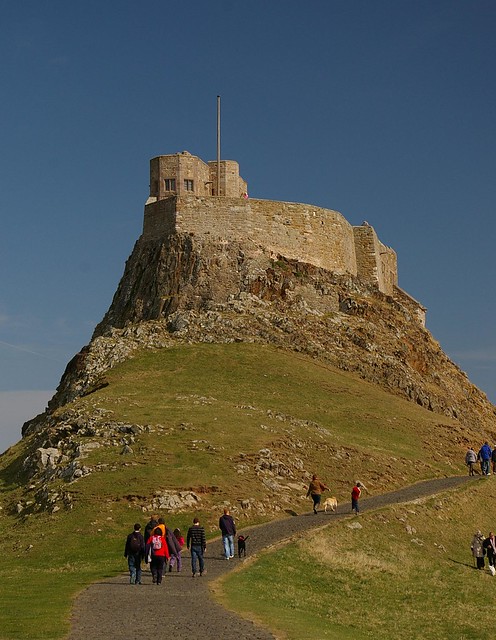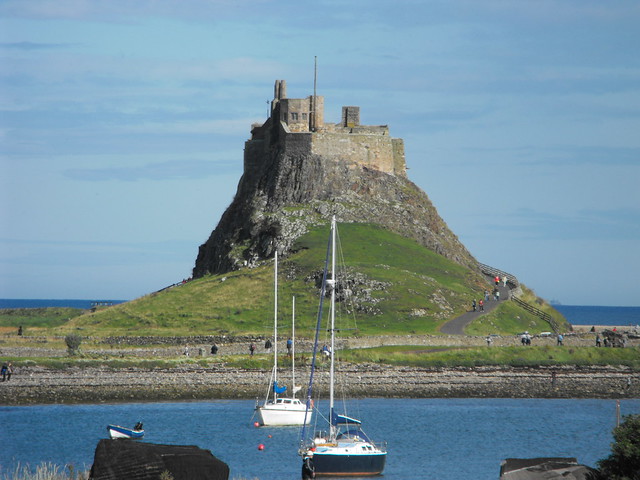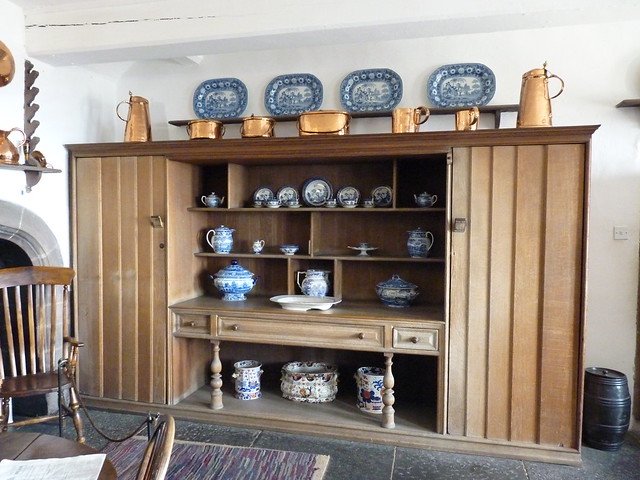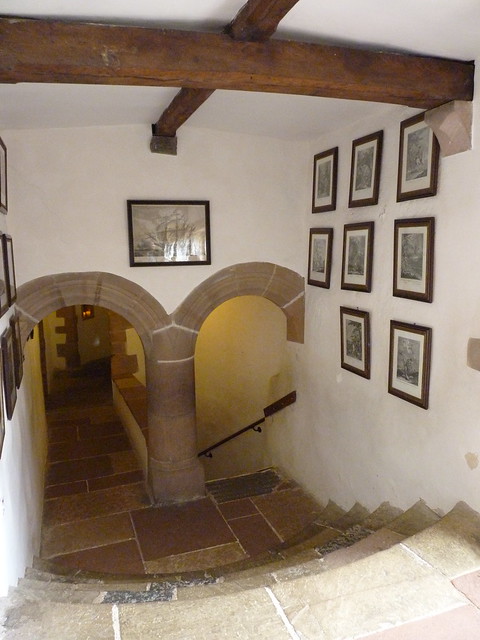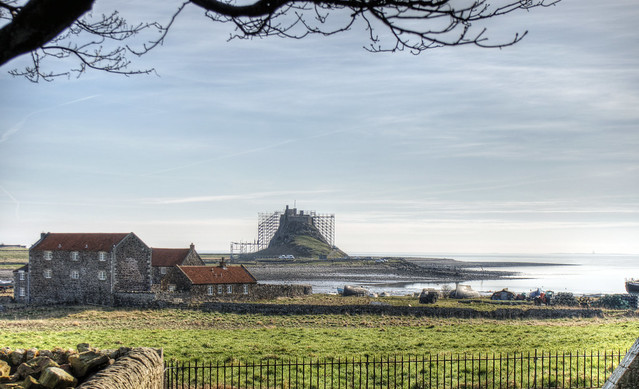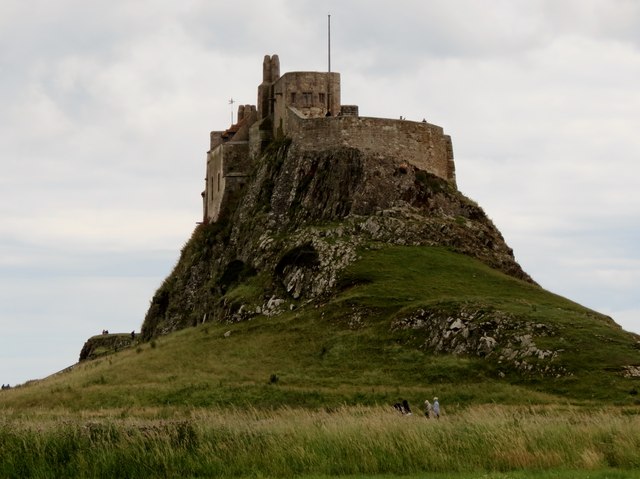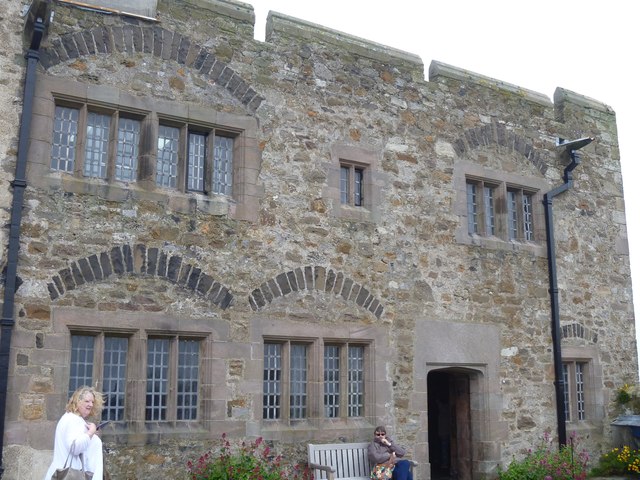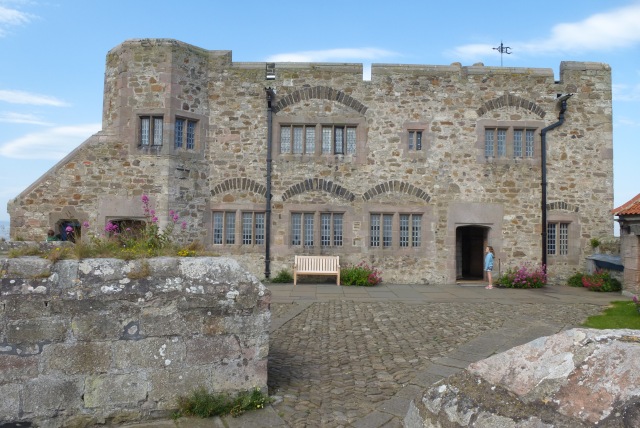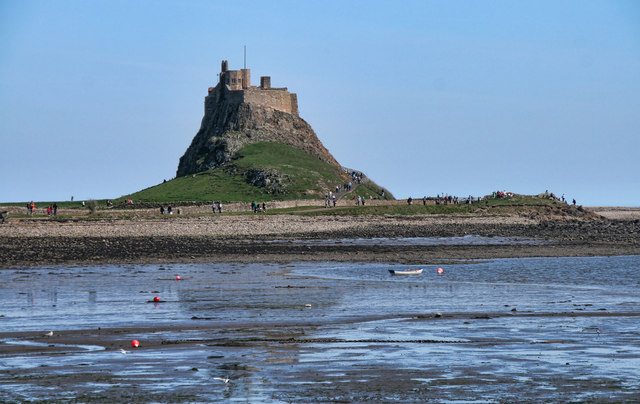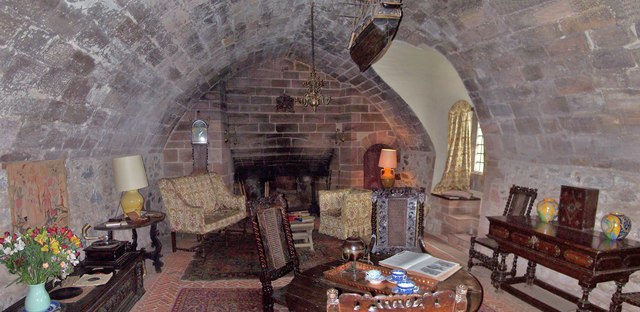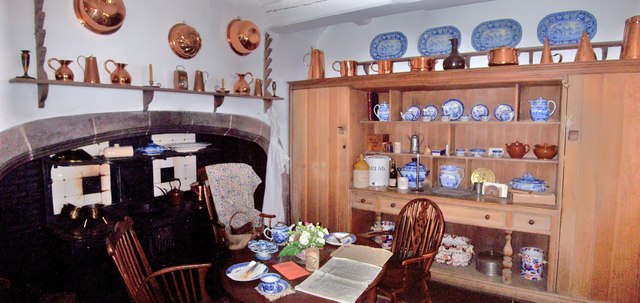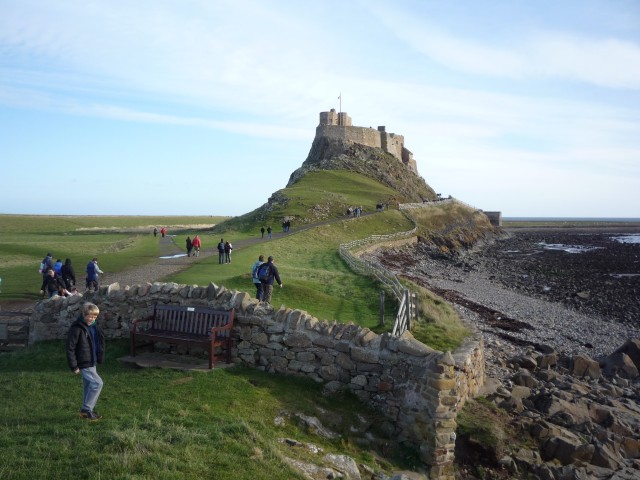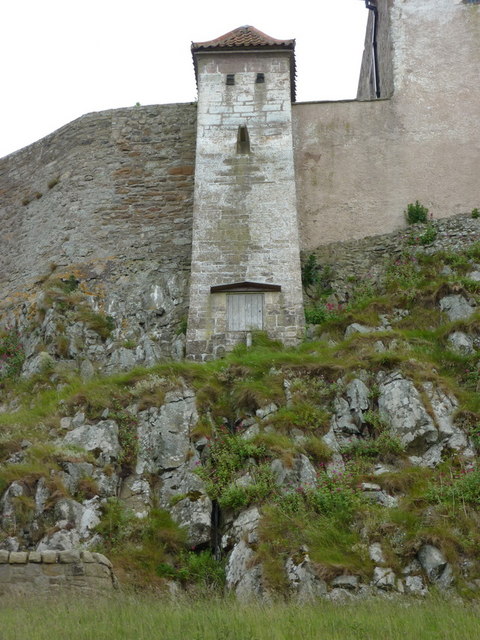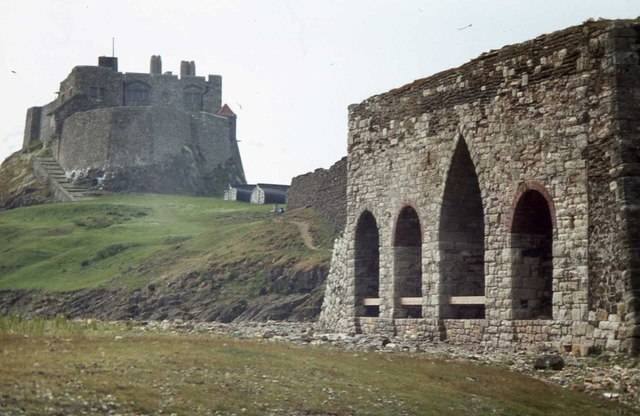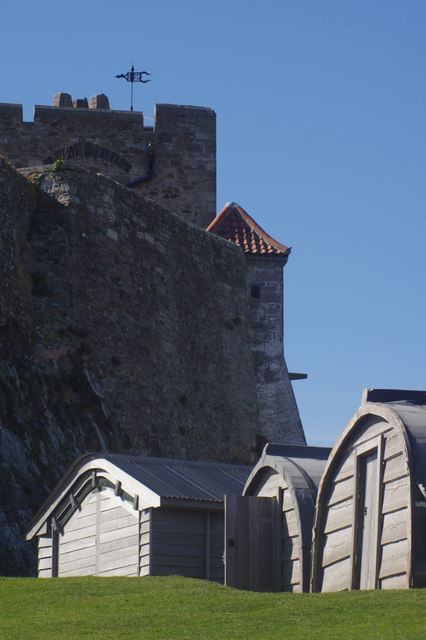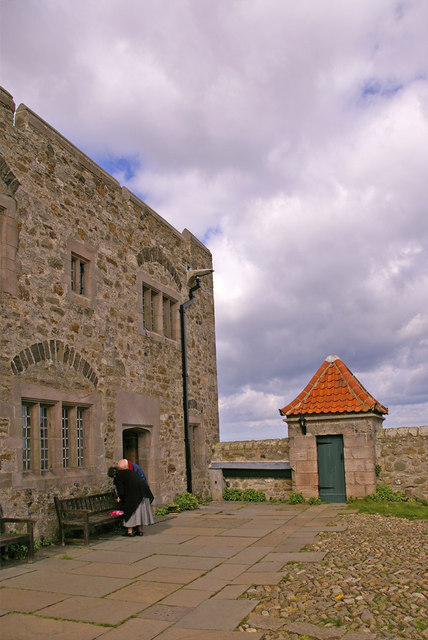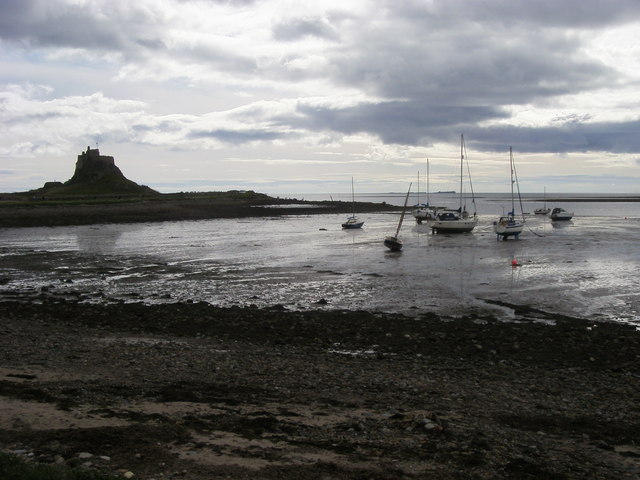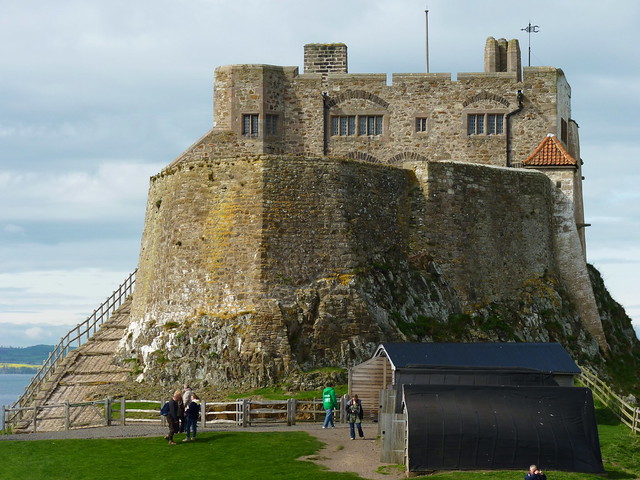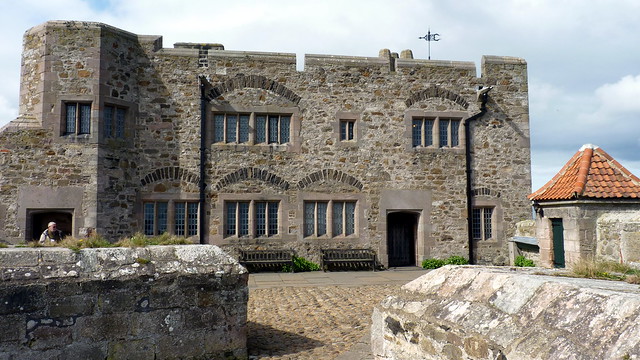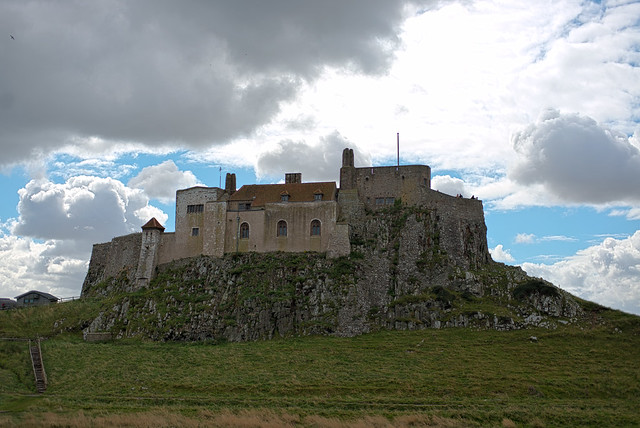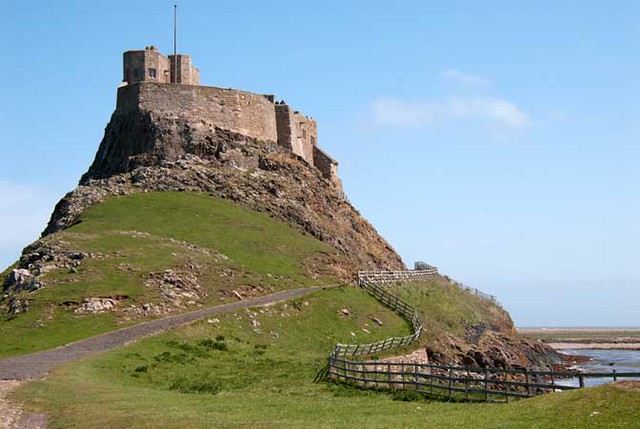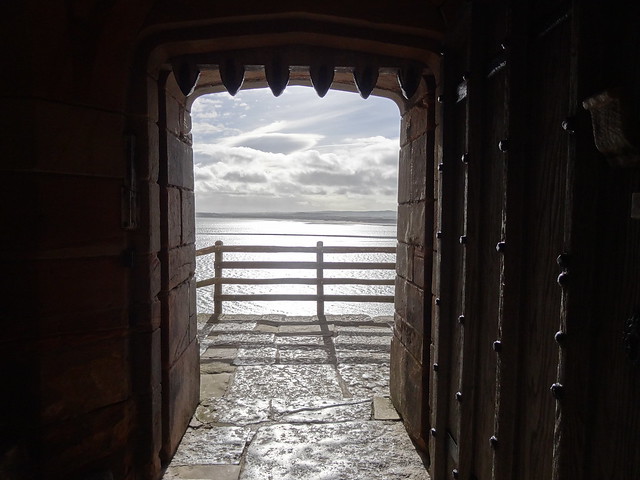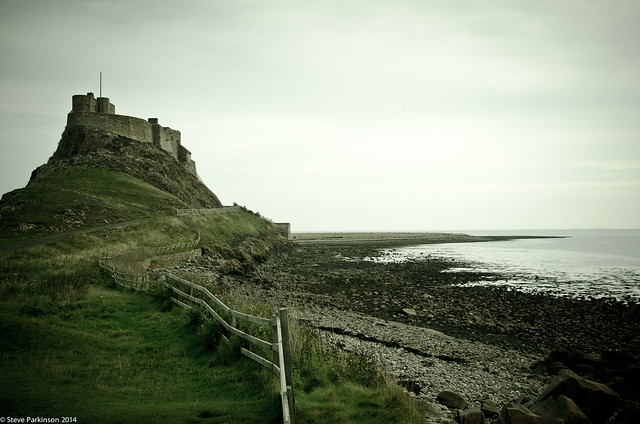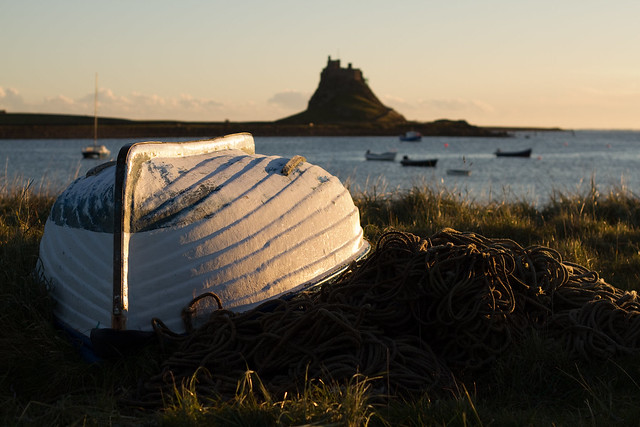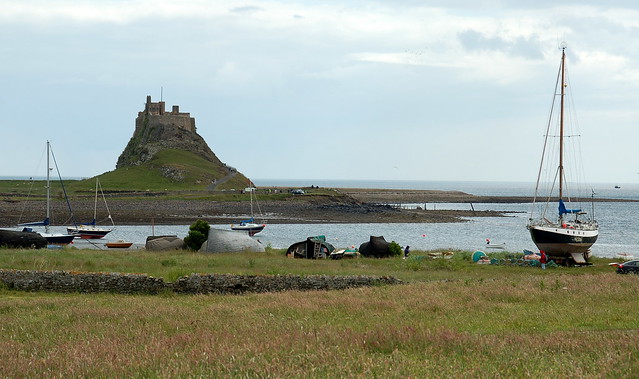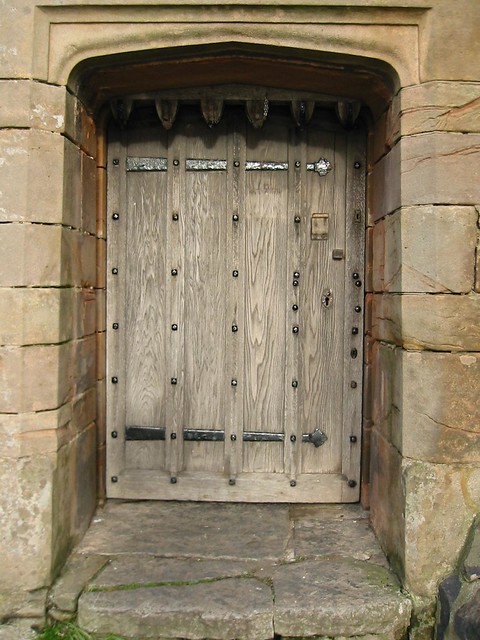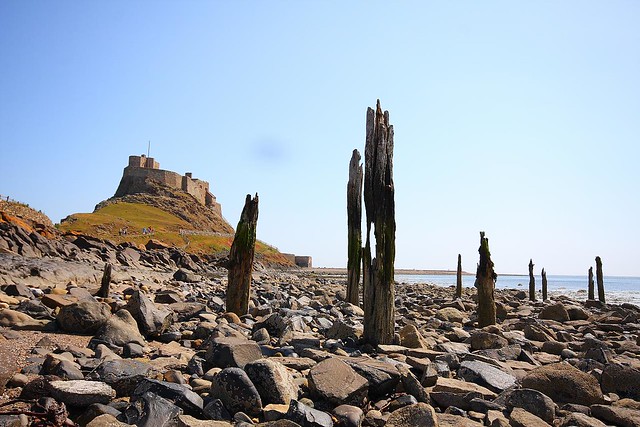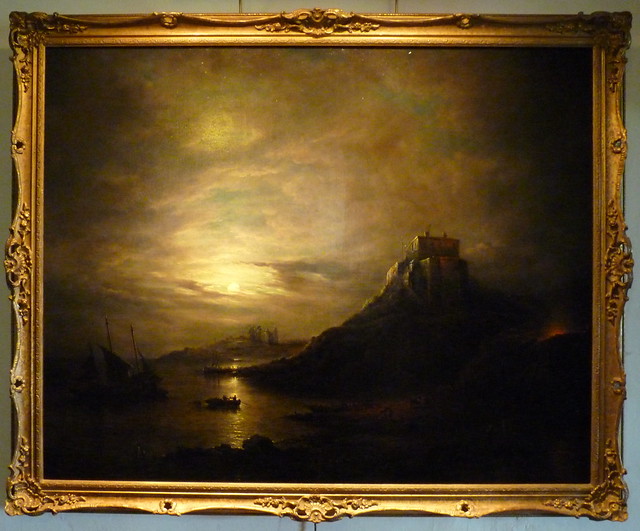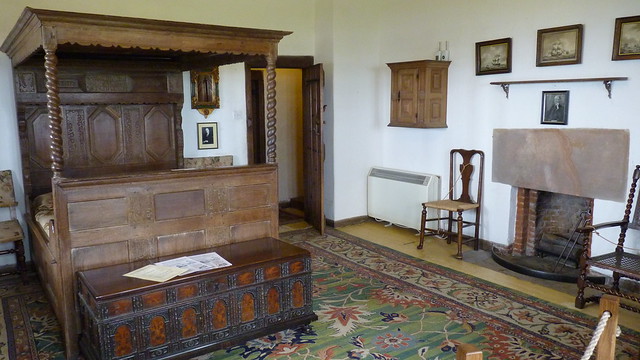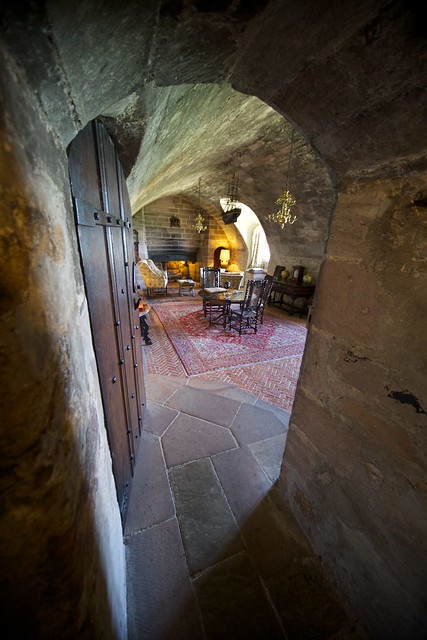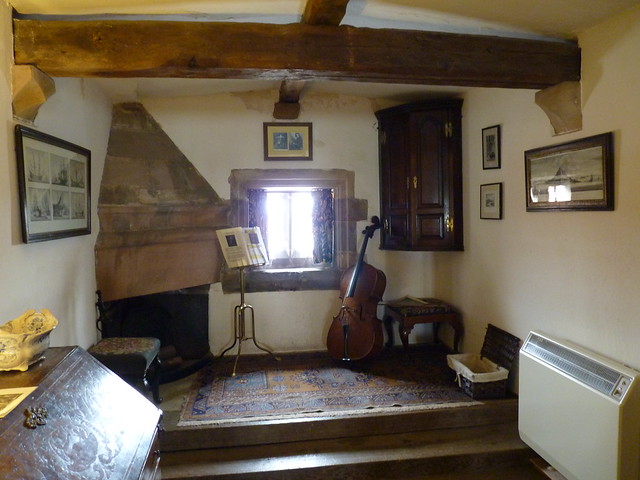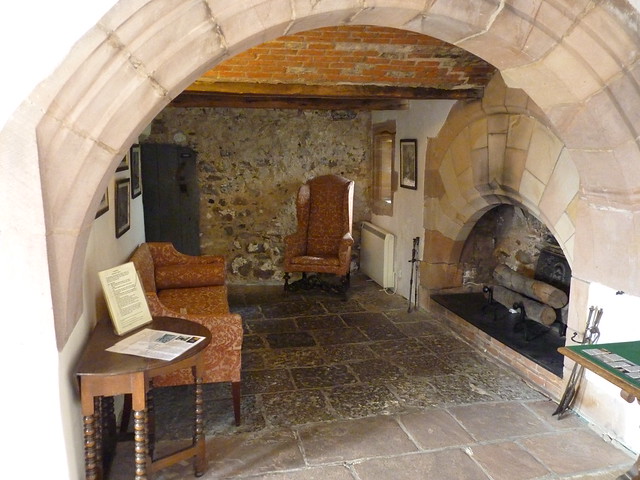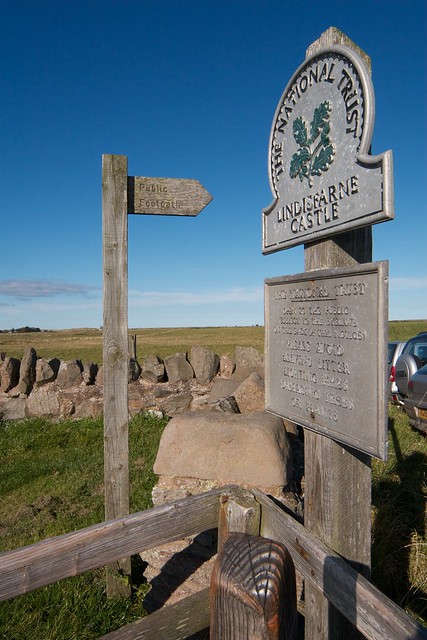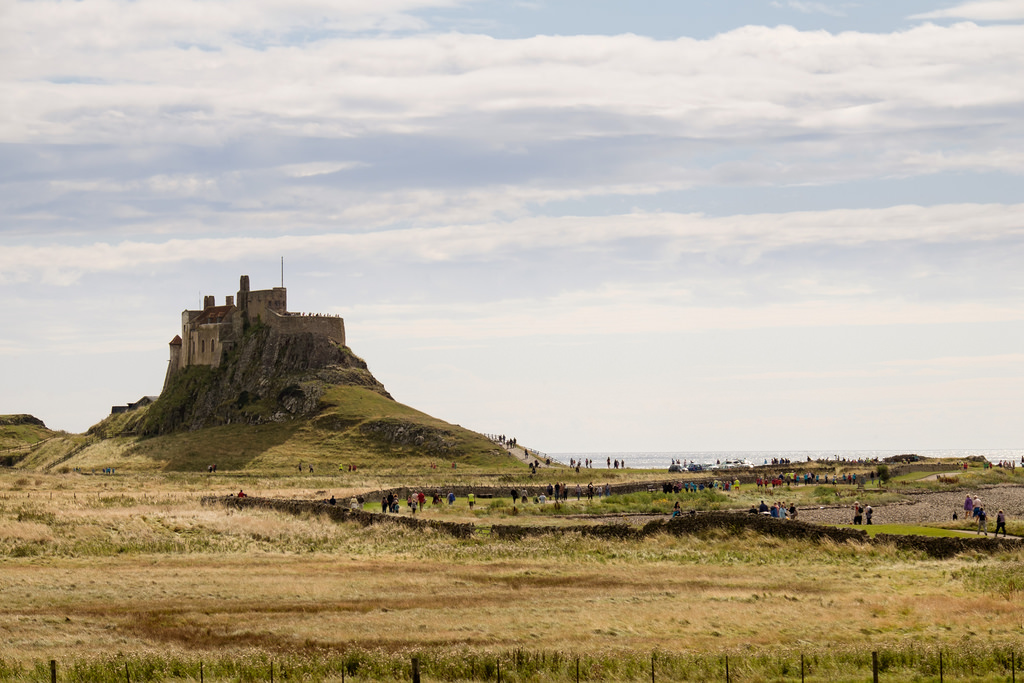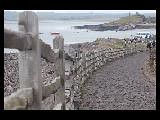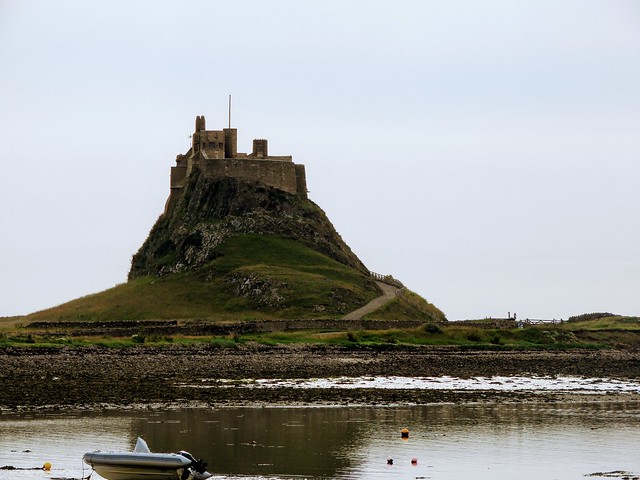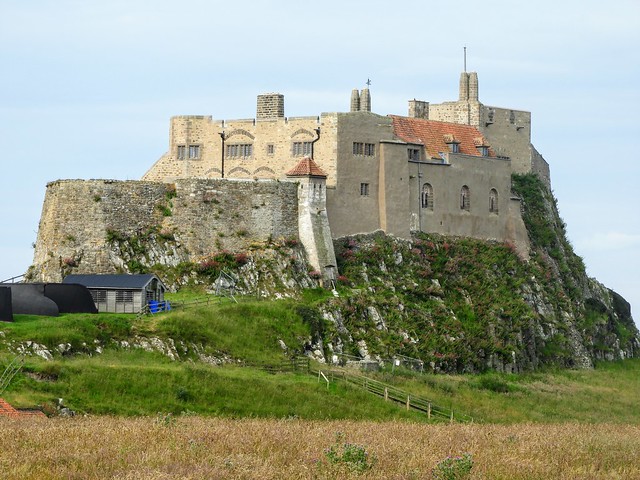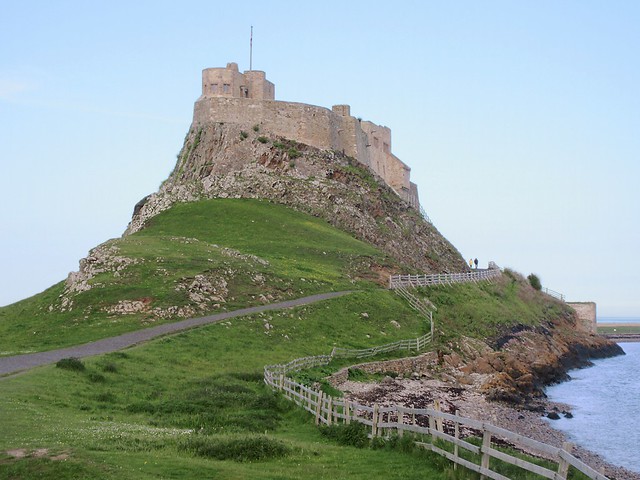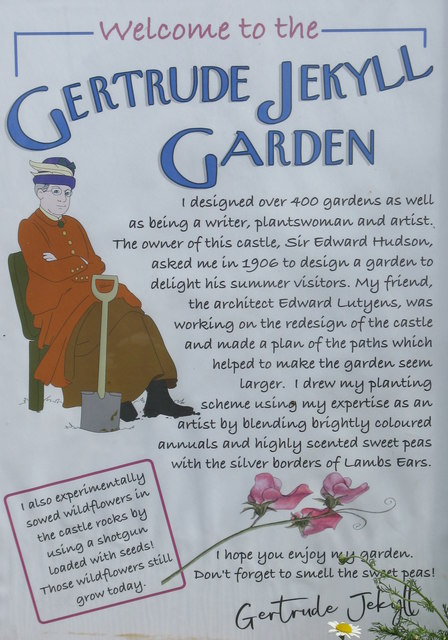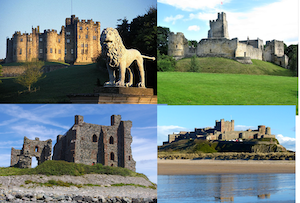Topics > Northumberland > Holy Island > Lindisfarne Castle
Lindisfarne Castle
Lindisfarne Castle is a 16th-century castle located on Holy Island, near Berwick-upon-Tweed, Northumberland, England, much altered by Sir Edwin Lutyens in 1901. The island is accessible from the mainland at low tide by means of a causeway.
History
The castle is located in what was once the very volatile border area between England and Scotland. Not only did the English and Scots fight, but the area was frequently attacked by Vikings. The castle was built in 1550, around the time that Lindisfarne Priory went out of use, and stones from the priory were used as building material. It is very small by the usual standards, and was more of a fort. The castle sits on the highest point of the island, a whinstone hill called Beblowe.
Lindisfarne's position in the North Sea made it vulnerable to attack from Scots and Norsemen, and by Tudor times it was clear there was a need for a stronger fortification, although obviously, by this time, the Norsemen were no longer a danger. This resulted in the creation of the fort on Beblowe Crag between 1570 and 1572 which forms the basis of the present castle.
After Henry VIII suppressed the priory, his troops used the remains as a naval store. In 1542 Henry VIII ordered the Earl of Rutland to fortify the site against possible Scottish invasion. By December 1547, Ralph Cleisbye, Captain of the fort, had guns that included a wheel-mounted demi-culverin, 2 brass sakers, a falcon, and another fixed demi-culverin. However, Beblowe Crag itself was not fortified until 1549 and Sir Richard Lee saw only a decayed platform and turf rampart there in 1565. Elizabeth I then had work carried out on the fort, strengthening it and providing gun platforms for the new developments in artillery technology. These works in 1570 and 1571 cost £1191. When James I came to power in England, he combined the Scottish and English thrones, and the need for the castle declined. At this time the castle was still garrisoned from Berwick and protected the small Lindisfarne Harbour.
In the eighteenth century, the castle was occupied briefly by Jacobite rebels, but was quickly recaptured by soldiers from Berwick who imprisoned the rebels; they dug their way out and hid for nine days close to nearby Bamburgh Castle before making good their escape.
In later years the castle was used as a coastguard look-out and became something of a tourist attraction. Charles Rennie Mackintosh made a sketch of the old fort in 1901.
In 1901, it became the property of Edward Hudson, a publishing magnate and the owner of Country Life magazine. He had it refurbished in the Arts and Crafts style by Sir Edwin Lutyens. It is said that Hudson and the architect came across the building while touring Northumberland and climbed over the wall to explore inside.
The walled garden, which had originally been the garrison's vegetable plot, was designed by Lutyens' long-time friend and collaborator, Gertrude Jekyll between 1906 and 1912. It is some distance away from the castle itself. Between 2002 and 2006 it was restored to Jekyll's original planting plan which is now held in the Reef Collection at the University of California, Berkeley. The castle, garden and nearby lime kilns have been in the care of the National Trust since 1944 and are open to visitors.
Lutyens used upturned disused boats (herring busses) as sheds. In 2005, two of the boats were destroyed by arson. They were replaced in 2006 and the third boat has now been renovated by the National Trust. The replacement of the two burned boats by two new boat sheds features on a new DVD Diary of an Island. This shows a fishing boat from Leith being cut in half in a boatyard in Eyemouth and the two "sheds" being transported to the island and lifted into place by crane.
The Spanish architect Enric Miralles used Lutyens' upturned herring busses as an inspiration for his design of the Scottish Parliament Building in Edinburgh.
Lutyens' renovation
The entrance to the castle is quite dramatic and involves a steep climb around the rocky base. Lutyens' original slope was unprotected by either rails or fences in an attempt to emphasise the exposed nature of the site. When the future George V and Queen Mary visited in 1908, it is said they were alarmed by the slope and the cobbled surface.
Once inside the castle, the entrance hall is sectioned off by large stone pillars, somewhat reminiscent of a church nave with the dark reddish-brown of the stone contrasting with the whitewashed plasterwork. The space is completed by a bare stone floor.
The kitchen is almost as bare, and is dominated by a large stone fireplace. Here, as at Castle Drogo, Lutyens uses the space in interesting ways. Throughout the castle, he has used stone, brick, slate and wood to create simple forms, and uses textures to demonstrate a rustic, spartan life-style. Despite being a castle it remains a homely space where the human scale is room size, but with incongruous architectural elements. In the scullery there is a tiny window over a stone sink surrounded by the mechanism used to operate the portcullis.
After descending to the dining room one is inside the remnants of the Tudor fort. The vaults here and in the adjacent ship room are entirely functional as they support the gun battery above. The wide chimney-piece contains an old bread-oven; here Lutyens has emphasised the age of the room with Neo-Gothic traceried windows framed by curtains which swing out to lie flat along the wall. One of the end walls is painted a rich Prussian blue, which contrasts with the herring-bone patterned red-brick floor.
Next door is the ship room where a green wall fulfils a similar role. The furniture is in keeping, with much dark wood in the tables and cabinets. The few upholstered chairs and sofas have now faded to gentle tones.
The largest bedroom, the east, is bright and airy and again has curtains on pull-out poles. The long gallery was a new space created by Lutyens, intended to echo the grand galleries of Elizabethan and Jacobean houses. The scale is much smaller, but again the use of exposed stone arches and oak beams provides a grand yet rustic feel.
Further on, an upper gallery has a raised platform at one end. From here an oak door leads onto the upper battery with its views along the coastline. The music room at the castle was used by Guilhermina Suggia, and a cello is left in the room today to mark her frequent visits.
Filming location
Lindisfarne Castle has provided a shooting location for a number of films. Roman Polanski's 1966 classic Cul-de-sac, a psychological comedic drama starring Donald Pleasence, Lionel Stander and Françoise Dorléac, was shot entirely in and around the castle. It serves as the residence for Pleasence and Dorléac's characters. Polanski later returned to the castle to shoot a few scenes for his The Tragedy of Macbeth (1971), in which it stands in for Glamis Castle. The castle's use in Macbeth inspired the producers of the TV series Cold Feet (1998–2003) to use it as an exterior filming location in one episode, though interior scenes were shot at Hoghton Tower in Lancashire. It was also used as a stand-in for Mont San Pierre in the 1982 film The Scarlet Pimpernel starring Anthony Andrews. In the British television show Wolfblood, filming was done there for an episode. Some external shots of the castle are used in the fourth season of the period television drama Reign.
Visit the page: Lindisfarne Castle for references and further details. You can contribute to this article on Wikipedia.
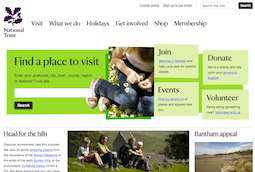
from http://www.nationaltrust.org.…
Lindisfarne Castle - National Trust
- Visitor information, photos & summary of the history of Lindisfarne Castle
Added by
Simon Cotterill
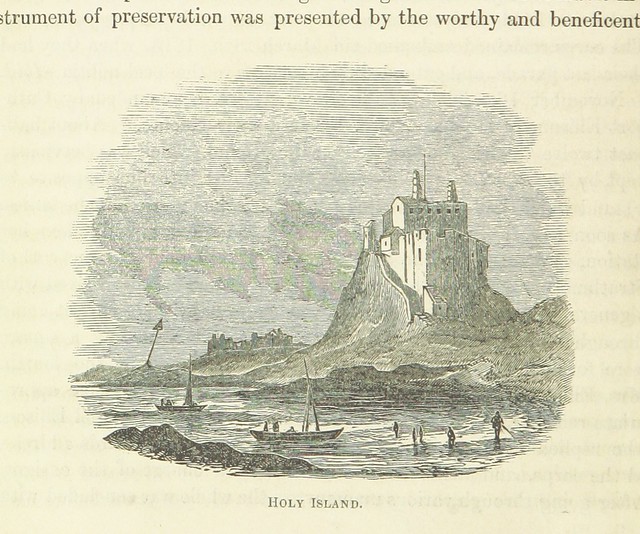
from Flickr (flickr)
Image taken from page 46 of 'The Local Historian's Table Book of remarkable occurrences, historical facts, traditions, legendary and descriptive ballads, connected with the Counties of Newcastle-upon-Tyne, Northumberland, and Durham. Historical Division.
Pinned by Simon Cotterill
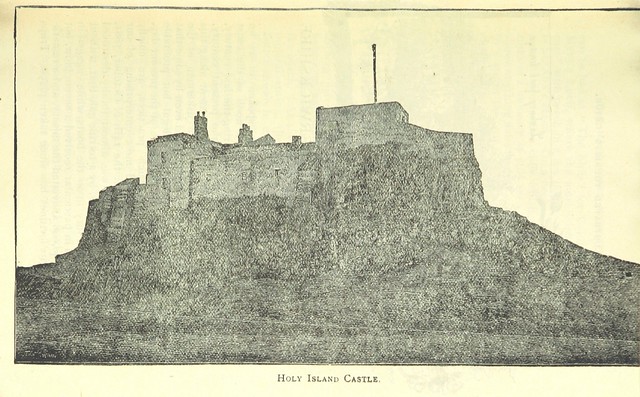
from Flickr (flickr)
Image taken from page 99 of 'The Illustrated Tourists' Guide to the scenery and places of interest ... served by the North Eastern Railway Company. By J. H. Morrison'
Pinned by Simon Cotterill

from Flickr (flickr)
Lindisfarne castle, Northumberland, North East, England
Pinned by Simon Cotterill

from https://holy-island.uk/visiti…
Visiting Lindisfarne Castle
- A guide to visiting Lindisfarne Castle on Holy Island. Opening dates, practicalities and a humorous history.
Added by
Danny Dagan


from http://www.nationaltrust.org.…
Lindisfarne Castle - National Trust
- Visitor information, photos & summary of the history of Lindisfarne Castle
Added by
Simon Cotterill

from Flickr (flickr)
Image taken from page 46 of 'The Local Historian's Table Book of remarkable occurrences, historical facts, traditions, legendary and descriptive ballads, connected with the Counties of Newcastle-upon-Tyne, Northumberland, and Durham. Historical Division.
Pinned by Simon Cotterill

from Flickr (flickr)
Image taken from page 99 of 'The Illustrated Tourists' Guide to the scenery and places of interest ... served by the North Eastern Railway Company. By J. H. Morrison'
Pinned by Simon Cotterill

from Flickr (flickr)
Lindisfarne castle, Northumberland, North East, England
Pinned by Simon Cotterill

from https://holy-island.uk/visiti…
Visiting Lindisfarne Castle
- A guide to visiting Lindisfarne Castle on Holy Island. Opening dates, practicalities and a humorous history.
Added by
Danny Dagan
List number: 1042306
Wikipedia: Lindisfarne Castle
County: Northumberland
Grid ref: NU1363841751
Post code: TD15 2SH
